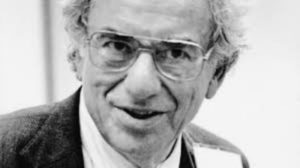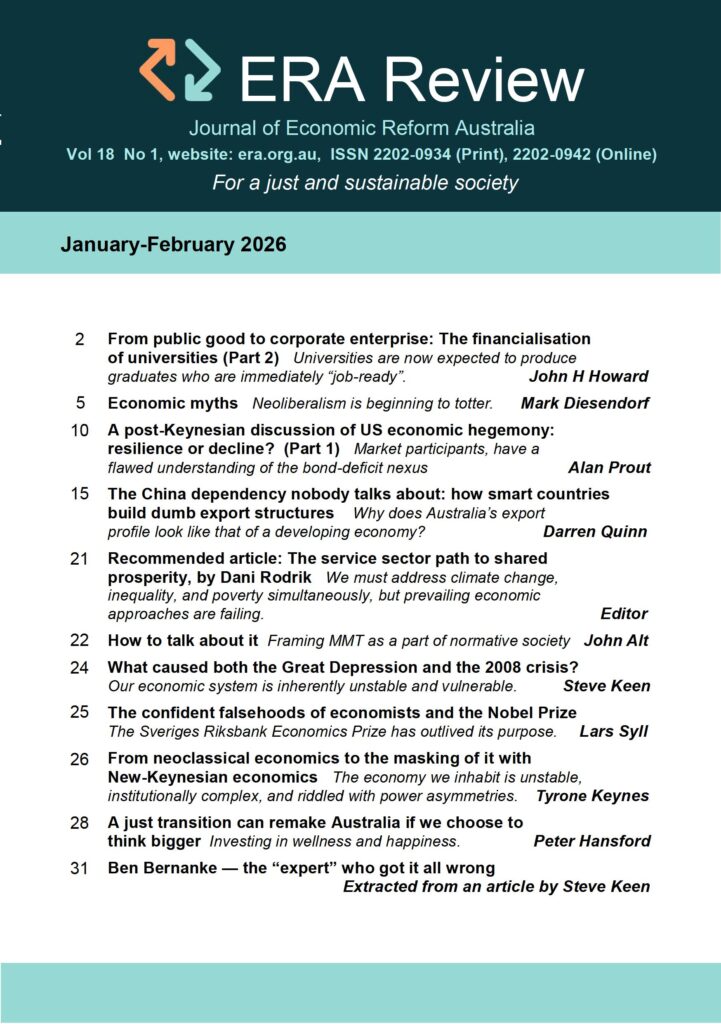The insights of Hyman Minsky
From a Wikipedia entry under Hyman Minsky
Hyman Minsky (1919-1996) was a U.S. economist attached to Washington University in St Louis, and a distinguished scholar at the Levy Economics Institute of Bard College. He received his B.S. degree in mathematics from the University of Chicago and went on to gain a MPA and a PhD in economics from Harvard, where he studied under Schumpeter and Leontief. The following extracts are from the Wikipedia article:
“His research was aimed at providing understanding and explanation of the characteristics of financial crises, which he attributed to swings in a potentially fragile financial system. Hyam Minsky is sometimes described as a post Keynesian economist because, in the Keynesian tradition, he supported some government intervention in the financial markets, opposed some of the financial deregulation policies popular in the 1980s, stressed the importance of the U.S. Federal Reserve as a lender of last resort, and argued against the over- accumulation of private debt.

Financial Theory
“Minsky proposed theories which linked financial market fragility, in the normal life cycle of an economy, with specul- ative investment bubbles endogenous to financial markets. Minsky claimed that in prosperous times, when corpor- ate cash flow rises beyond what is needed to pay off debt, a speculative euphoria develops, and soon thereafter debts exceed what borrowers can pay off from their incoming revenues, which in turn produces a financial crisis. As a result of such speculative borrowing bubbles, banks and lenders tighten credit availability, even to companies that can afford loans, and the economy subsequently contracts.
“This slow movement of the financial system from stability to fragility, followed by crisis, is something for which Minsky is best known, and the phrase ‘Minsky moment’ refers to this aspect of Minsky’s academic work.
‘He offered very good insights in the ’60s and ’70s when linkages between the financial markets and the economy were not as well understood as they are now’, said Henry Kaufman, a Wall Street money manager and economist.
‘He showed us that financial markets could move frequently to excess. And he underscored the importance of the Federal Reserve as a lender of last resort’.
“Minsky’s model of the credit system, which he dubbed the ‘financial instability hypothesis’ (FIH), incorporated many ideas already circulated by John Stuart Mill, Alfred Marshall, Knut Wicksell, and Irving Fisher. ‘A fundamental characteristic of our economy’, Minsky wrote in 1974, ‘is that the financial system swings between robustness and fragility and these swings are an integral part of the process that generates business cycles’.
“Disagreeing with many mainstream economists of the day, he argued that these swings, and the booms and busts that can accompany them, are inevit- able in a so-called free market economy – unless government steps in to control them, through regulation, central bank action and other tools. Such mechanisms did in fact emerge in response to crises such as the 1907 panic and the Great Depression.
Minsky opposed the deregulation that characterized the 1980s.
“It was at the University of California, Berkeley that seminars attended by Bank of America executives helped him to develop his theories about lending and economic activity, views he laid out in two books, John Maynard Keynes (1975), a classic study of the economist and his contributions, and Stabilizing an Unstable Economy (1986), and more than a hundred professional articles.
Further developments
“Minsky’s theories have enjoyed some popularity, but have had little influence in mainstream economics or in central bank policy.
“Minsky stated his theories verbally, and did not construct mathematical models based upon them.
Consequently, his theories have not been incorporated into mainstream economic models, which do not include private debt as a factor. However the post-Keynesian economist Steve Keen has recently developed models of endogenous economic crises based on Minsky’s theories. These models are currently at the research stage and do not enjoy widespread use.
“Minsky’s theories, which emphasize the macroeconomic dangers of speculative bubbles in asset prices, have also not been incorporated into central bank policy. However, in the wake of the financial crisis of 2007–2010 there has been increased interest in policy implications of his theories, with some central bankers advocating that central bank policy include a Minsky factor.
The financial instability hypothesis
“Hyman Minsky’s theories about debt accumulation received revived attention in the public media during the subprime mortgage crisis of the late 2000s. The New Yorker has labelled it ‘the Minsky Moment’.
“Minsky argued that a key mechanism that pushes an economy towards a crisis is the accumulation of debt by the non-government sector. He identified three types of borrowers that contribute to the accumulation of insolvent debt: hedge borrowers, speculative borrowers, and Ponzi borrowers.
“The ‘hedge borrower’ can make debt payments (covering the interest and principal) from current cash flows from investments.
“ or the ‘speculative borrower’, the cash flow from investments can service the debt, i.e., cover the interest due, but the borrower must regularly roll over, or re-borrow, the principal.
“The ‘Ponzi borrower’ (named after Charles Ponzi, see also Ponzi scheme) borrows based on the belief that the appreciation of the value of the asset will be sufficient to refinance the debt but could not make sufficient payments on interest or principal with the cash flow from investments; only the appreciating asset value can keep the Ponzi borrower afloat.
“If the use of Ponzi finance is general enough in the financial system, then the inevitable disillusionment of the Ponzi borrower can cause the system to seize up: when the bubble pops, i.e., when the asset prices stop increasing, the speculative borrower can no longer refinance (roll over) the principal even if able to cover interest payments. As with a line of dominoes, collapse of the speculative borrowers can then bring down even hedge borrowers, who are unable to find loans despite the apparent soundness of the underlying investments.”
The following reference elaborates Minsky’s views about how financial crises evolve, as summarised in the above article: The financial Instability Hypothesis , by Hyman Minsky (Levy Institute working paper #74, 1992): http://www.levyinstitute.org/pubs/wp74.pdf






























